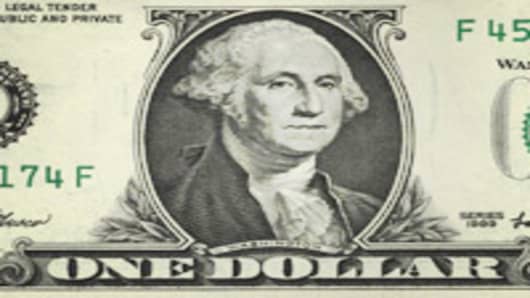By many measures, confidence in the dollar has never been lower, and some fear more Federal Reserve interest rate cuts will make matters worse by swelling inflation and undermining long-term U.S. economic health.
The Fed has cut benchmark interest rates from 5.25 percent to 3 percent since September, and the central bank's Chairman Ben Bernanke has signaled he would reduce them further to boost an economy that many on Wall Street and beyond fear is already in recession.
That's pushed the dollar to an all-time low against a basket of currencies and the euro to $1.5275 for the first time in its nine-year history. The Fed's own broad trade-weighted dollar index fell to a 12-year low.
But whether the central bank succeeds in forestalling recession is of little consequence to dollar investors these days. The most optimistic forecasts call for little more than anemic growth even if the Fed succeeds.
More troubling is the fear that whatever success the central bank achieves will have been bought at the expense of future inflation, shattering confidence in the dollar.
A weakening dollar increases the cost of imported goods for Americans and tends to perpetuate rising oil prices because it makes energy cheaper for non-U.S. consumers, prompting more consumption.
"It's a worry, because I think the dollar weakness we're seeing stems from the perception that the Fed and other central banks have different policy priorities," said Merrill Lynch currency strategist Steven Englander. "With the euro above $1.50, it wouldn't surprise me if investors were concerned about where the dollar was headed."
The Fed's rush to cut interest rates contrasts with the European Central Bank's approach, which has been to hold rates at 4 percent to fight uncomfortably high inflation. It's also at odds with central banks in Australia and the emerging markets that have recently raised rates.
That has erased the dollar's yield advantage against the euro and other major currencies, sending it sharply lower.
Englander said the Fed hopes pro-growth measures will help the dollar later. "The goal is not a strong dollar a month from now but a stronger dollar two years from now."
A Bottomless Pit
But some investors worry that it can be hard to get the inflation genie back in the bottle once he's escaped. In the 1970s, it took a massive tightening campaign that pushed rates past 16 percent before the Fed regained control.
Underlying U.S. consumer inflation is running at 2.47 percent in the 12 months to January, the highest since February 2007. Investors have poured into commodities as a hedge against inflation, sending oil to a record above $103 a barrel and gold near $1,000 an ounce.
If foreigners start selling dollar holdings -- a problem because the United States relies on foreign inflows to fund its trade deficit -- some fear interest rates would spike, rattling the economy and raising the government's borrowing costs.
"The dollar is a bottomless pit right now because there's no indication the Fed is going to do anything to contain dollar selling," said Peter Schiff, CEO of Euro Pacific Capital, a broker-dealer in Darien, Connecticut. "A currency crisis is coming."
Schiff said he sees the euro above $1.60 this year and advises clients to dump dollars for foreign equities and the Swiss franc, the New Zealand dollar and most Asian currencies.
Not Quite Yet at Apocalpyse
Still, there are plenty of investors and economists who are not ready to sound the alarms.
Bernard Connolly, a global strategist at Banque AIG in London, said the Fed is facing the deepest U.S. recession since the 1930s and is correct to focus on growth.
"Bernanke was quite right to suggest he doesn't care about the dollar right now," he said. "There's no dollar crisis, but there would be one if the Fed started constraining its interest rate policy because of the exchange rate."
Bear Stearns chief economist David Malpass objects to what he calls the "weak dollar policy" of the Fed and the U.S. administration and concedes that it will hurt U.S. growth by discouraging investment.
But he rejects the notion that the dollar is on the verge of a crisis because the depth of U.S. capital markets will ensure continued foreign investment. He also said he sees U.S. growth rebounding later in 2008.
"Rather than a tipping point, I think of dollar weakness as a constant, grinding drag on U.S. performance relative to the rest of the world," he said.
Some of the world's biggest dollar holders -- Asian central banks and oil producing countries -- have fresh incentive to sell dollars.
The former, strategists say, are warming to the idea of letting their currencies rise more quickly against the dollar to counteract rising inflation.
And the latter? "Well, you have to put yourself in an oil exporter's shoes," Merrill Lynch's Englander said. "You have all this capital to invest, so why would you invest it in a country where the two-year note is yielding 1.54 percent?"


